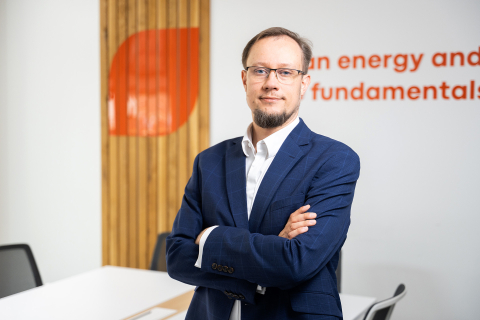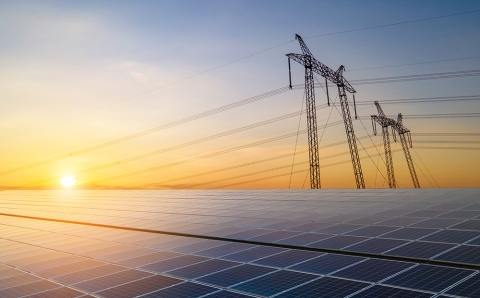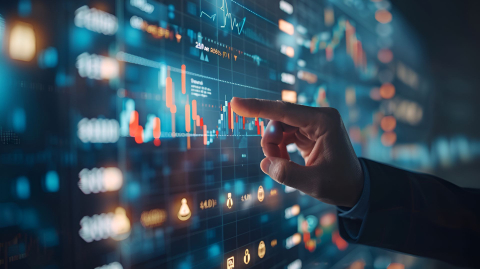Q&A with Dr Dawid Klimczak, Managing Director of Origination & Trading
How would you describe what you do at Photon Energy?
I lead the Origination & Trading team. Essentially, we connect renewable energy sources to the markets and customers that need clean energy, making sure contracts, trading strategies and storage solutions all work together. It’s a mix of planning, problem-solving and collaborating with teams across the company.
What kind of challenges do you enjoy tackling in your work?
Energy markets are complex and constantly changing. Electricity market design is much different and much more complicated than it used to be. Only the best traders will stay in the market over the next decade. Algo trading and AI are two aspects that will rebuild the new European electricity market. I enjoy figuring out how to balance risk with opportunity and designing solutions that are both practical and forward-looking.
You mentioned algo trading and AI as major drivers of change. How do these technologies redefine what energy trading means today?
Algo trading and AI are fundamentally transforming energy trading from a largely manual, intuition-based process into a hyper-efficient, data-driven ecosystem. Today, these technologies redefine energy trading by enabling real-time analysis of massive datasets, including weather patterns, demand fluctuations, geopolitical events and market prices.
For instance, algorithmic systems can execute trades in milliseconds, spotting arbitrage opportunities across borders or optimising bids in day-ahead and intraday markets that human traders might miss. AI takes this further by incorporating machine learning for predictive forecasting—anticipating supply disruptions from renewables like wind or solar, or modelling complex scenarios with generative models to simulate market behaviours.
This shifts trading from reactive to proactive, reducing risks and maximising margins in volatile environments, especially as renewables introduce intermittency. Looking ahead to the next decade, as renewables and storage reshape the market, energy traders’ roles will evolve from pure deal-makers to strategic orchestrators of integrated energy systems.
With solar and wind projected to dominate, and battery storage growing exponentially—potentially adding hundreds of gigawatts globally—traders will need to master portfolio optimisation across decentralised assets. They’ll focus less on bulk commodity trades and more on balancing grids in real time, managing virtual power plants and leveraging storage to arbitrage price spikes. Price volatility will intensify due to weather dependency and the phasing out of subsidies like the EEG in Europe, so traders will act as risk managers, using AI tools for hedging and flexibility trading.
Ultimately, the human element will pivot to high-level strategy, regulatory navigation and innovation in areas like green hydrogen integration, while automation handles the tactical execution.
What’s most exciting to you about working in the energy sector right now?
The pace of change is incredible. Renewable energy and storage are transforming the energy system, and we get to play a role in making that transition work efficiently and sustainably. Every day there’s something new to learn or improve. The cost of batteries is dropping and an enormous amount of gigawatts of renewables are coming to the market every year. It’s a Black Swan you have to understand. Old players and big utilities are facing a lot of problems, as are TSOs. Only flexible traders will be successful.
Can you tell us more about Photon Energy’s Smart Offtake approach? What makes it different from traditional offtake models?
Photon Energy’s Smart Offtake is an innovative energy management solution designed for renewable producers, particularly solar and wind asset owners, to maximise revenue while minimising market risks. It involves flexible, short-term offtake agreements—typically one to two years with extension options—where Photon Energy purchases the full production from a plant and handles its sale on the day-ahead market.
Key features include automated self-curtailment, which remotely shuts down production during periods of negative electricity prices to avoid losses, and advanced optimisation of energy flows to reduce balancing costs. This is all managed through remote monitoring and AI-driven tools that ensure stable returns by adapting to real-time market conditions.
What sets it apart from traditional offtake models, like long-term Power Purchase Agreements (PPAs), is its agility and risk-sharing focus. Traditional models often lock in fixed prices over 10–20 years, providing predictability but limiting upside in rising markets and exposing producers to curtailment penalties without smart interventions.
Smart Offtake, by contrast, is shorter-term and market-responsive, using technology to curtail output intelligently during oversupply (common with renewables), thus protecting against negative pricing events that have become more frequent in Europe. It also lowers balancing fees and boosts overall revenue by selling at optimal times, making it ideal for a volatile, decarbonising market where flexibility trumps rigidity.
How do you see battery storage and flexibility solutions shaping the energy landscape?
These solutions are becoming essential. As more renewable energy comes online, balancing supply and demand is key. Storage and flexibility allow us to optimise energy use, support the grid and create more reliable projects. Poland is a great example of the energy transition. Back in 2019, there were less than a few gigawatts of PV. Now it’s above 23 gigawatts of PV.
From your perspective, what’s the next big disruption in European energy markets that traders should prepare for?
From my perspective, the next major disruption in European energy markets will be the complete phase-out of Russian gas imports by 2027, as recently agreed by the EU Council, coupled with the rapid scaling of demand-side flexibility and decentralised storage.
This isn’t just about supply diversification—Europe has already slashed Russian gas from 40% of supply in 2021 to around 10% today—but a forced acceleration towards alternative sources like LNG, Norwegian pipelines and green hydrogen, which will introduce unprecedented volatility in pricing and logistics. Traders should prepare for supply chain bottlenecks, higher costs from global LNG competition, and geopolitical ripple effects, especially if tensions escalate further.
On top of that, the €8 billion flexibility opportunity by 2030—unlocked through commercial and industrial demand response, battery storage and smart grids—will redefine market dynamics. As renewables hit 168 GW of new solar and 44 GW of wind added since 2022, grids will face congestion, pushing traders into new roles in ancillary services and virtual power plants.
To prepare, focus on building AI-enhanced forecasting models, diversifying portfolios into hydrogen and storage tech, and advocating for harmonised EU regulations to avoid fragmentation. Those who adapt early will thrive in this more resilient but unpredictable landscape.
Is there a recent project or achievement you’re particularly proud of?
We recently structured a deal that paired a solar project with a battery storage system to provide both energy and flexibility to the grid. It required careful planning across multiple teams, and it shows how our solutions can make a tangible difference.
What do you enjoy most about being part of the Photon Energy team?
The people. It’s inspiring to work with colleagues who are passionate, smart and collaborative. Everyone brings a different perspective, and together we make complex things happen.
How does what you do connect to Photon Energy Group’s mission to make clean energy and water more accessible?
Origination & Trading is right at the intersection of project development and market delivery. By structuring deals and managing risk effectively, we help ensure our projects succeed commercially and support Photon Energy’s mission to make clean energy more accessible.


